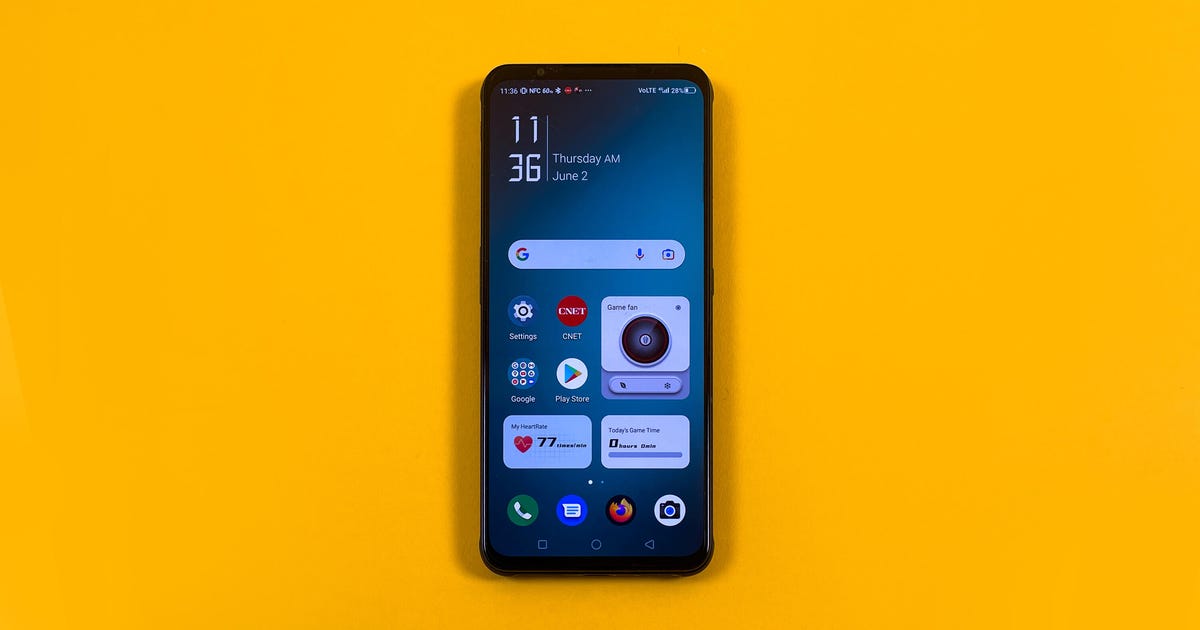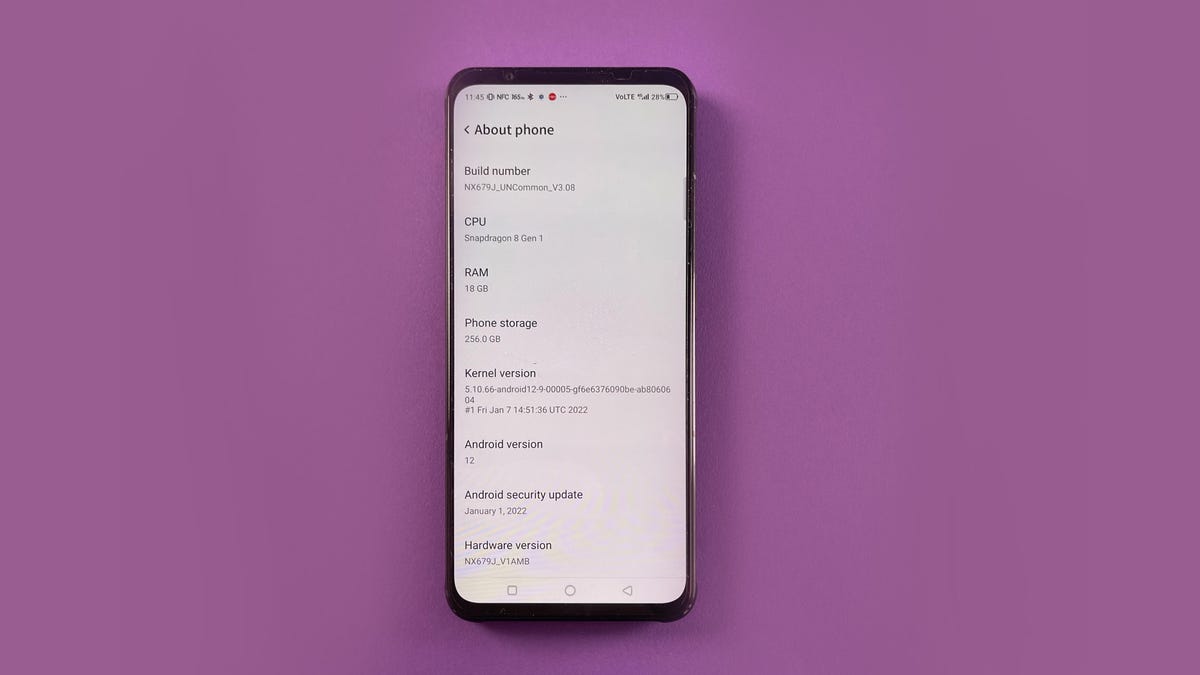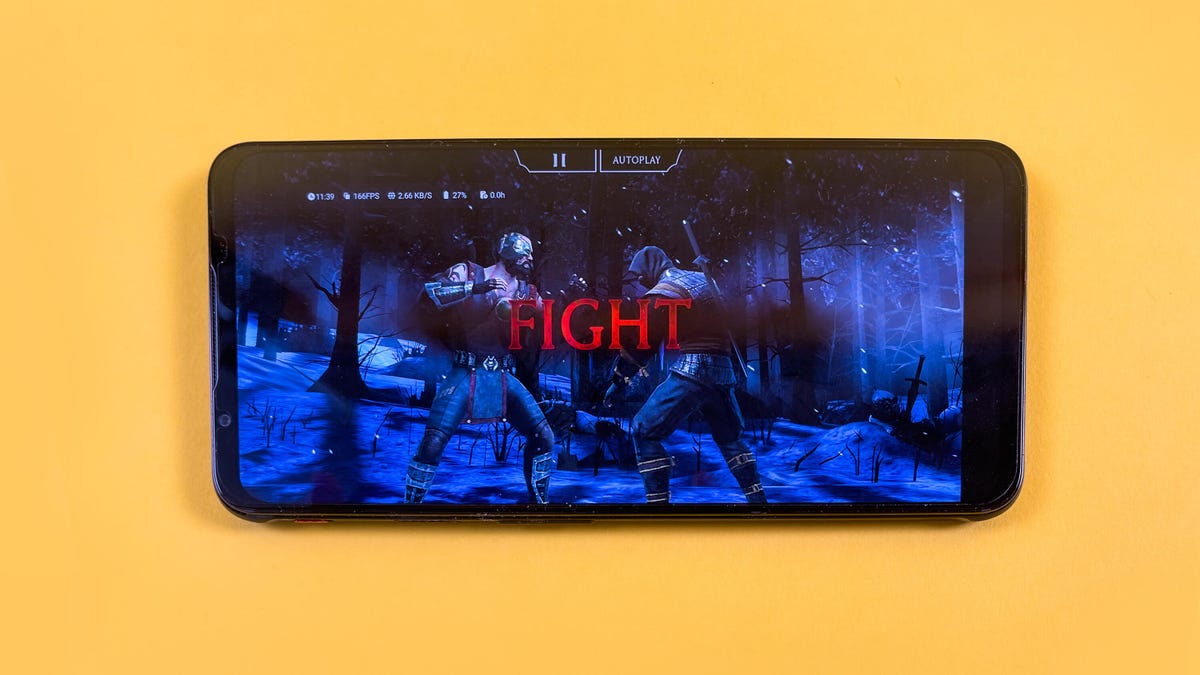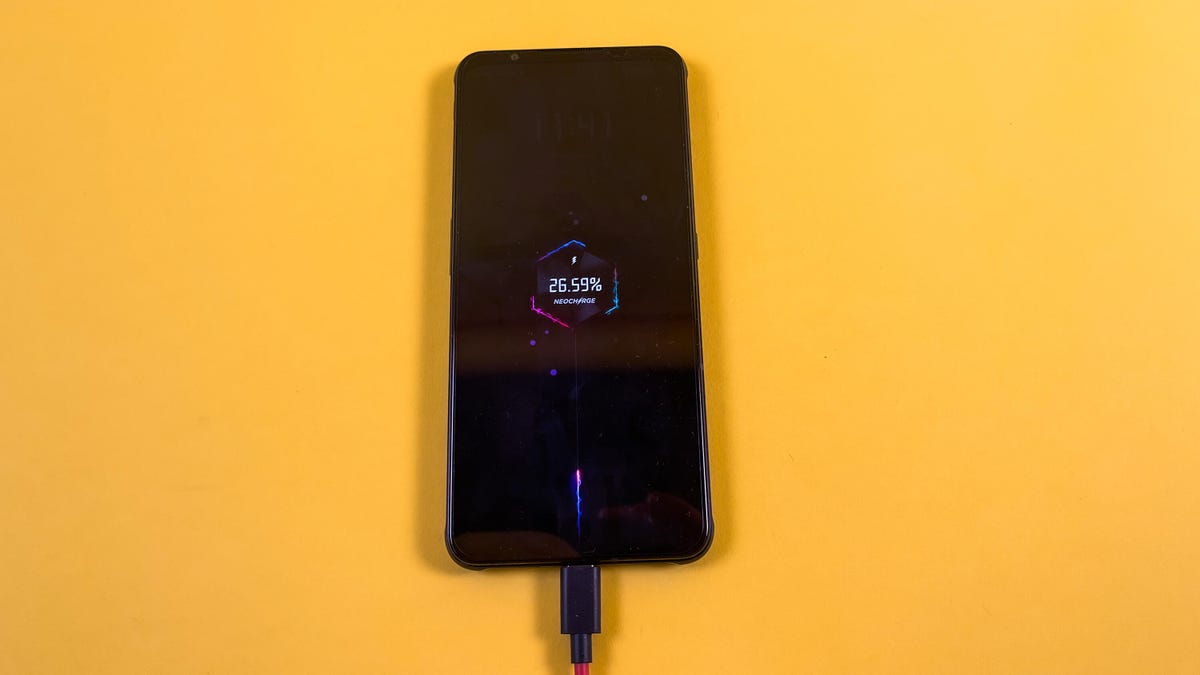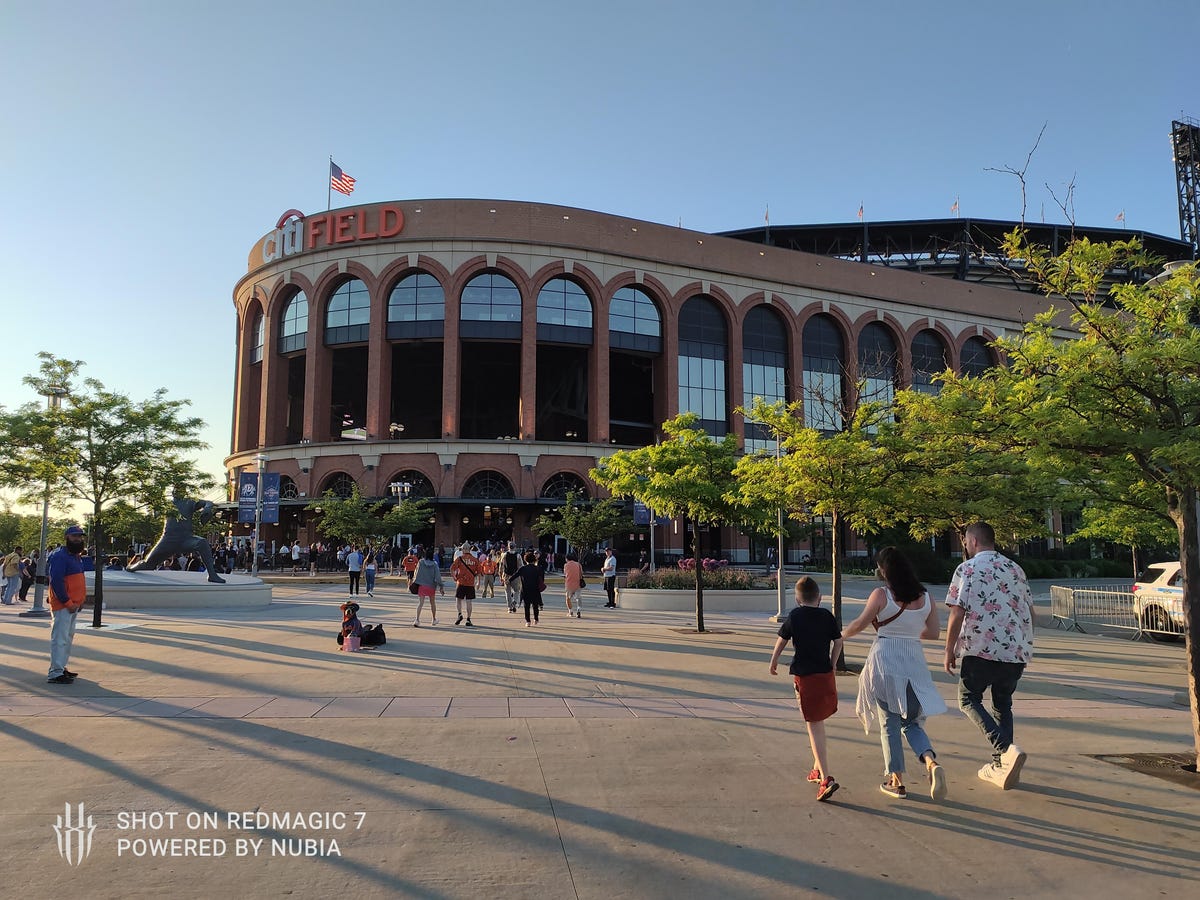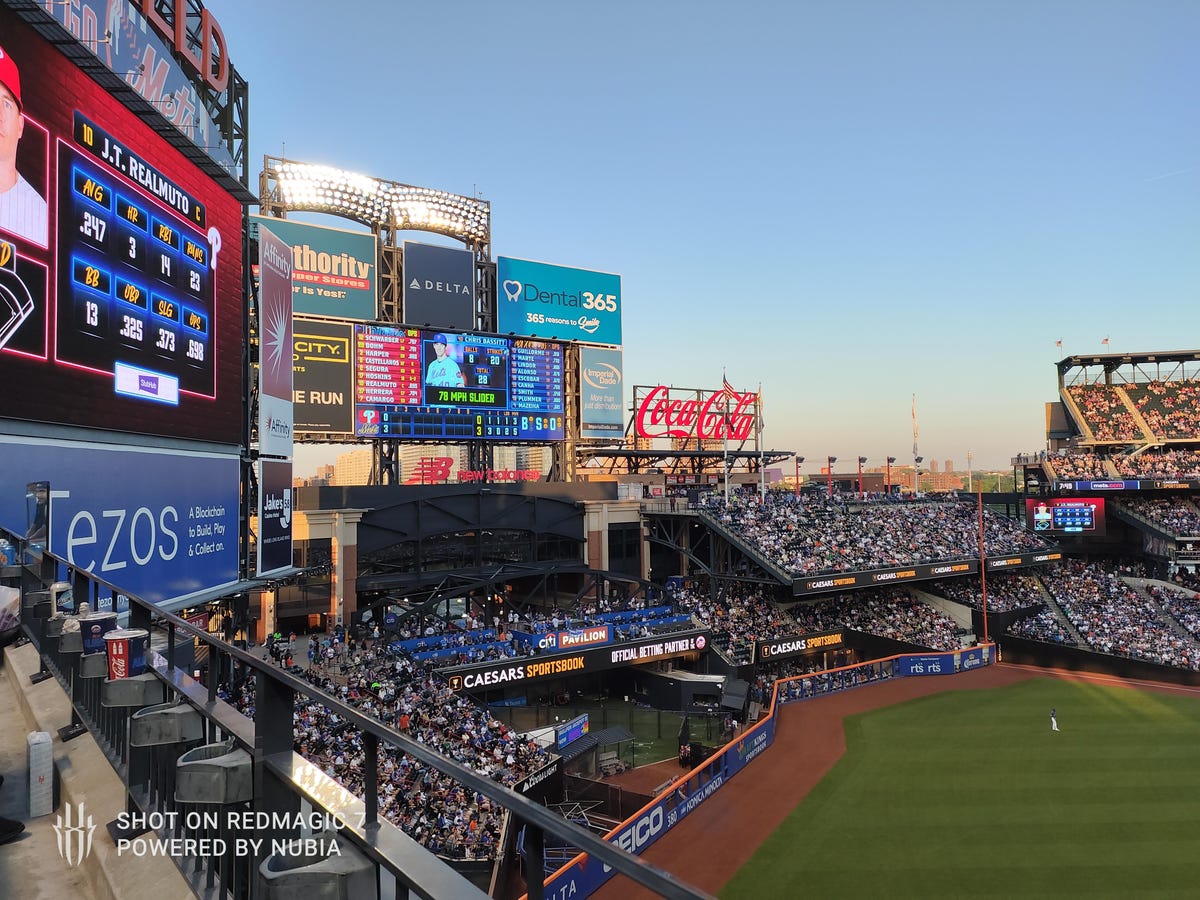
Asus ROG Phone review: The best way to play games on Android
If you can't tell from the angular lines, exposed copper heat sinks and pulsating light-up logo, the Asus ROG Phone is designed for gaming. While I can't say the looks are my cup of tea, there will be plenty of people who think this styling looks badass. And it's nice to see a phone maker go for something different.
But what exactly makes this a gaming phone? Well let's start with the AMOLED display that can refresh 90 times a second -- a first for any OLED phone. The higher refresh rate means less motion blur and faster response times. It's not as high as the Razer Phone 2's 120Hz LCD screen, but the fast refresh times are a noticeable improvement over other phones when playing certain games. And even though the ROG's screen looks nice, sometimes it was too dim even at its brightest setting.
Pressure sensitive buttons called AirTriggers
Perhaps one of the coolest and most innovative features on the ROG Phone is AirTriggers. These are pressure sensitive corners that double as bumper buttons for games. I've used phones with pressure sensitive features before like the Pixel 3 where you can squeeze the sides to open Google Assistant. But Asus' approach here is by far my favorite implementation of the technology on phones.
In landscape gameplay, the top right and left corners of the phone have pressure sensitive sensors that can be used as bumper buttons.
AirTriggers can be programmed for specific functions. For example in PUBG, I assigned one to fire a weapon and another to crouch. It's a curious solution to the lack of physical controls on phones and yet it's so well-implemented and feels so intuitive that I became much more immersed in the games I played.
The curved bezels and sides make the phone incredibly comfortable to hold especially in landscape. The speakers, dotted with copper colored grills, are wonderfully loud and sound fantastic. They're right up there with the amazing speakers on the Razer Phone 2 in terms of being able to produce bombastic high-quality sound.
(Top photo) With AirTriggers activated, a blue circle "L1" and red circle "R1" appear onscreen. (Bottom photo) I dragged the circles on top of controls for firing a weapon and crouching. Now when I tap the top right corner of the phone it throws a punch or fires a weapon.
ROG X mode and AeroActive cooler
The ROG has two USB-C ports, one on the bottom and one on the side so when you're playing games in landscape mode the power cord doesn't get in the way of your hands. The side port also supports accessories like a detachable fan called the AeroActive cooler which comes with the phone.
Now, it might seem silly to attach a fan to the back of your phone, but it makes a big difference in terms of performance, especially if you're going to be playing a game for 20 to 30 minutes without a break. The fan keeps the phone from getting too hot to hold and along with a software setting called "X mode" lets the processor run at its highest speed for longer during gameplay.
The detachable AeroActive cooler keeps the phone cool during gameplay and along with Asus' X mode improves processor performance.
Quick break for a Patrick thought: I'm neutral on the detachable fan. I have a strong fear I'd lose it, but the gain in performance is beyond impressive especially when I played a game for a long amount of time. But then, I am attaching a fan to my phone which seems like a clunky solution.
But don't get me wrong, you don't need the fan and X mode to use this phone in everyday tasks. The phone opens apps lighting fast, even big ones like the camera. Android animations are peppy and appear smooth. There's no lag when processing and saving photos.
I ran GeekBench 4 when I first got the ROG without the fan and X mode enabled and got a single-core score of 1,413 and a multi-core score of 5,592. Then I ran it again with the fan attached and X mode turned on and got 2,556 for single-core and 8,445 for multi-core. That ranks it up there with the Razer Phone 2, Galaxy Note 9 and OnePlus 6 as one of the fastest current Android phones.
However, Apple'siPhone XS is in another league in terms of raw processing power and performance -- and it doesn't require a detachable fan. Check out the results of our performance tests below.
3DMark Slingshot Unlimited
3DMark Ice Storm Unlimited
Geekbench v.4.0 single-core
Geekbench v.4.0 multicore
Camera and battery life
Then there's all the regular phone stuff. It has a 4,000-mAh battery that lasted an incredible 15 hours and 5 minutes battery life in CNET's battery lab test for continuous video playback on airplane mode.
Image quality from the dual rear cameras is good. They capture a nice amount of detail. HDR mode adds a bit more dynamic range without going over the top with highlights and shadows. Take a look at the photos below I took inside a cafe: one with HDR enabled and the other with it off. Notice how the HDR captures the details outside the door and windows whereas the non-HDR photo just shows a white blob of clipped highlights.
The second rear camera gives you a wider field of view so you can pack more into your frame. And it is really wide. I found it great for moments I wanted to take a panorama but didn't want to go through that capture process. I also liked putting the camera on the wide-angle setting and placing the phone super close to an object in the foreground to create a perspective effect.
This was taken with the ROG's main 12-megapixel camera rear camera.
This was taken with the second rear camera that is wide-angle. I was standing in the same place when I took this photo and the one above.
Video looks decent but definitely suffers in low-light situations. The ROG has slow motion in 1080p resolution at 240 frames per second. It's not as impressive as the iPhone XS, but it is definitely worth trying.
Below are some more photos I took with the Asus ROG Phone.
Here's a photo of Stella the cat. Notice the detail in her fur.
Even with HDR, the ROG doesn't have the dynamic range abilities of the Pixel 3 or iPhone XS. But it still does a decent job with this sunset over Twin Peaks.
The ROG handles this indoor shot of a Four Barrel cappuccino pretty well. I noticed the phone tends to protect highlights -- look at that foam.
The ROG has a tendency to underexpose images like this one of the California Street cable car.
This photo was taken at sunrise. Low-light shots aren't this phone's strength. Notice the noise in the building on the right.
Asus ZenMotion and (sigh) ZenMoji
There's also a cool feature called ZenMotion. When the screen is asleep you can draw a letter on it to launch an app. Draw a "W" to unlock the phone and open the weather app or a "C" to open the camera. Besides showing this feature off to my friends, I didn't find myself using it but once or twice.
For those of you inclined, there is an app called ZenMoji that maps an AR cartoon avatar of an animal like a horse, cat or bear over your face. The characters are pretty adorable and yet another entry in the animated emoji wars: Apple has Memoji, Samsung has AR Emoji, LG has animated emoji and Huawei has 3D Live Emoji. You'll never be at a loss of ways to express yourself.
The ZenMoji rabbit winking.
Asus designed a lot of gaming accessories for the ROG that really take it beyond just playing games on a mobile phone. Accessories include:
In the TwinView dock, the phone sits on top, while it runs the game on another display below.
TwinView Dock: It transforms the phone into a Nintendo DS-like dual screen device and adds two physical shoulder buttons, a 6,000mAh battery and a selfie camera to stream and record yourself as you play.
The Gamevice controller for the ROG Phone.
Gamevice controller: The ROG fits in the middle of the vice like device which has dual joysticks, fire triggers, bumpers, a D-pad and all the buttons you'd expect.
WiGig Display Dock: Stream content wirelessly from your ROG Phone to a TV with minimal latency.
Here's how the ROG Phone sits in the Mobile Desktop Dock.
Mobile Desktop Dock: Turn the ROG into a mini gaming rig complete with nearly every port you can imagine: HDMI, DisplayPort, USB-C, USB-3.1, micro-USB, Ethernet, headphone jack and an SD card reader.
Professional Dock - It has less ports than the Mobile Desktop Dock but has HDMI for a monitor and two USB ports for a keyboard and mouse.
All of these are sold separately and there's currently no word on pricing or availability.
Asus ROG Phone is definitely for gamers
The Asus ROG Phone is designed inside and out for gamers. The 128GB model costs $899 which converts to £690 and AU$1,265 while the 512GB model is $1,099 converts to £840 and AU$1,545. The Razer Phone 2 costs $100 less, but you get less battery life.
I didn't expect to like the ROG as much as I did. The extras really do make a difference in how this thing performs: the AirTriggers, X mode and the fan actually work to enhance the gaming experience. But the ROG also has a solid camera and a great battery life.
While I wouldn't recommend this to nongamers (the Pixel 3, OnePlus 6 and Galaxy Note 9 are better all-around choices), if you're a gamer trying to decide between this and the Razer Phone 2, Asus has the edge when it comes to controls and optional accessories. Of course that edge comes at a higher price.
Personally I find the design of the Razer Phone 2 much more appealing as a phone and high-end mobile gaming device. And even without a fan, it beat the ROG in nearly every performance test I ran.
Yet as I write this, Apple is preparing to ship the iPhone XR which costs less than either the Razer or the ROG, has bonkers processing power -- although we've yet to test it -- and access to a larger library of games on iOS. It doesn't have a high-refresh rate display or pressure sensitive buttons, but it's definitely a worthy consideration for a gaming phone.
Spec comparison
| | Asus ROG Phone | Razer Phone 2 | Samsung Galaxy Note 9 | OnePlus 6 | iPhone XR |
|---|---|---|---|---|---|
| Display size, resolution | 6-inch AMOLED; 2,160x1,080 pixels; 90Hz screen refresh rate | 5.7-inch LCD; 2,560x1,440 pixels; 120Hz screen refresh rate | 6.4-inch Super AMOLED; 2,960x1,440 pixels | 6.28-inch OLED; 2,280x1,080 pixels | 6.1-inch LCD Retina Display; 1,792x828 pixels |
| Pixel density | 402ppi | 514ppi | 516ppi | 402ppi | 326ppi |
| Dimensions (Inches) | 6.3x3x0.34 in | 6.2x3.1x0.33 in | 6.37x3.01x0.35 in | 6.13x2.97x0.31 in | 5.9x3.0x0.33 in |
| Dimensions (Millimeters) | 158.8x76.2x8.7 mm | 158.5x79x8.5 mm | 161.9x76.4x8.8 mm | 155.7x75.4x7.75 mm | 150.9x75.7x8.3 mm |
| Weight (Ounces, Grams) | 7oz; 200g | 7.8oz; 220g | 7.09 oz.; 201g | 6.2 oz; 177 g | 6.8oz; 194g |
| Mobile software | Android 8.1 Oreo | Android 8.1 Oreo | Android 8.1 Oreo | Android 8.1 Oreo | iOS 12 |
| Camera | 12-megapixel standard with OIS, 8-megapixel ultra wide angle | Dual 12-megapixel (standard with OIS and telephoto) | Dual 12-megapixel (wide and telephoto) | 16-megapixel standard, 20-megapixel telephoto | Single 12-megapixel |
| Front-facing camera | 8-megapixel | 8-megapixel | 8-megapixel | 16-megapixel | 7-megapixel with Face ID |
| Video capture | 4K | 4K | 4K | 4K | 4K |
| Processor | Qualcomm Snapdragon 845 (2.96GHz) | Qualcomm Snapdragon 845 (2.8GHz) | Octa-core Qualcomm Snapdragon 845 processor (2.8GHz + 1.7GHz), or Octa-core Samsung Exynos 9810 (2.7 GHz + 1.7 GHz) | 2.8GHz Qualcomm Snapdragon 845 | Apple A12 Bionic |
| Storage | 128GB, 512GB | 64GB | 128GB, 512GB | 64GB, 128GB, 256GB | 64GB, 128GB, 256GB |
| RAM | 8GB RAM | 8GB | 6GB, 8GB | 6GB, 8GB | Not disclosed |
| Expandable storage | None | Up to 2TB | 512GB | None | None |
| Battery | 4,000 mAh | 4,000 mAh | 4,000 mAh | 3,300 mAh | Apple claims it will last 90 min. longer than iPhone 8 Plus |
| Fingerprint sensor | Back | Right spine | Back of phone | Back of phone | None (Face ID) |
| Connector | 2 x USB-C | USB-C | USB-C | USB-C | Lightning |
| Headphone jack | Yes | No | Yes | Yes | No |
| Special features | 90GHz screen, Sides of phone can be customized as buttons for games, ZenMoji | 120GHz screen refresh rate, water resistant (IP68), wireless charging | Water resistant (IP68); wireless charging; S-Pen; Iris and facial scanning, AR Emoji | Dual-SIM, Dash Charging | Water-resistant: IP67, dual-SIM capabilities (nano-SIM and e-SIM); wireless charging; Memoji |
| Price off-contract (USD) | $899 (128GB), $1,099 (512GB) | $800 | $1,000 (128GB), $1,250 (512GB) | $529 (64GB), $579 (128GB), $629 (256GB) | $749 (64GB), $799 (128GB), $899 (256GB) |
| Price (GBP) | Converts to £690 (128GB), £840 (512GB) | £780 | £899 (128GB), £1,099 (512GB) | £469 (64GB), £519 (128GB), £569 (256GB) | £749 (64GB), £799 (128GB), £899 (256GB) |
| Price (AUD) | Converts to AU$1,265 (128GB), AU$1,545 (512GB) | Converts to AU$1,105 | AU$1,499 (128GB), AU$1,799 (512GB) | AU$702 (64GB), AU$769 (128GB), AU$835 (256GB) | AU$1,229 (64GB), AU$1,299 (128GB), AU$1,479 (256GB) |
Source

